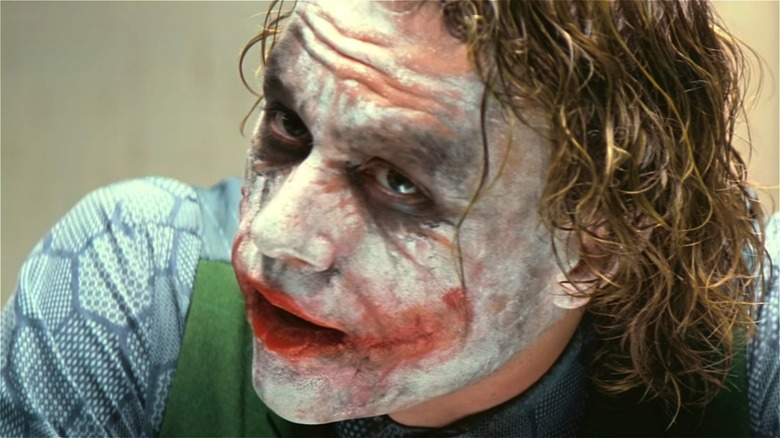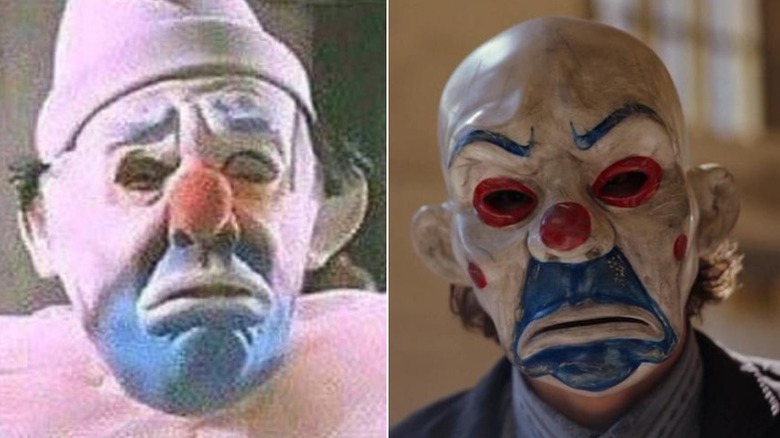The Dark Knight Scene That Means More Than You Think
Christopher Nolan's "The Dark Knight Trilogy" is full of things you may have missed, and this particularly applies to the trilogy's crown jewel, "The Dark Knight." The iconic cat-and-mouse game between Batman (Christian Bale) and The Joker (Heath Ledger) is so chock full of action and plot twists that even without all the Easter egg stuff, it contains enough excitement and surprises to warrant a rewatch or fifteen. And why not? It's a very good movie.
If you're looking for a reason to revisit Ledger's masterful, posthumous-Oscar-winning (via IMDb) performance as a grungy, gritty version of the supervillain, here's one for you. There's one specific, pivotal scene in "The Dark Knight" that's an explicit reference to the "Batman" franchise's past, and one iconic character's history in particular. Let's give everyone's annual "The Dark Knight" rewatch party an extra meaning by taking a look at the scene from the movie that means more than you think.
The Joker's introduction is a reference to Cesar Romero's version of the character
Batman has been many things, but before he became the dark, brooding, ultra-prepared character today's audiences know and love, he had his share of goofier moments. The campiest era in the Caped Crusader's history came in 1966, courtesy of the "Batman" TV show and Adam West's Batusi-dancing, wall-climbing, shark repeller-carrying version of the character. Love the show or hate it, though, there's no denying that Cesar Romero's Joker is one of the best versions of the character out there.
Christopher Nolan likely agrees with that sentiment, too, since "The Dark Knight" features a stealthy reference to Romero's Joker. As Redditor u/KevlarYarmulke has pointed out, the scene where Ledger's Joker finally removes his clown mask and reveals his face is extremely similar to the way Romero's Joker reveals himself in the "Batman" TV show, to the point that the clown masks they wear feature very similar face paint.
Of course, the actual Jokers behind the masks couldn't be any more different, which is reflected by the fact that Romero's version emerges with a delighted cackle, while Ledger's Joker has a distinctly ominous vibe. Still, it's neat that "The Dark Knight" retains the character's apparent penchant for a dramatic, mask-themed entrance.

